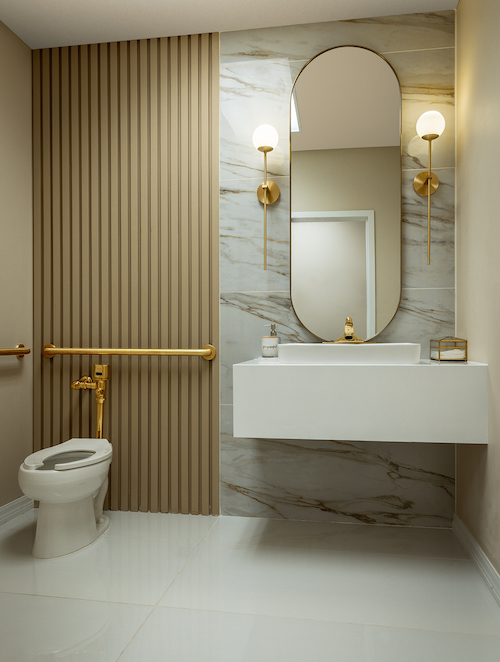When you go into a typical office or business, you’ll often find tankless commercial toilets and urinals. Over the years, these have become more common. However, in the average residential home, you won’t see a tankless toilet. Most homes around the world still utilize a tank toilet.
In this post, we’ll discuss some reasons why commercial restrooms utilize tankless toilets instead of the tank alternative. We’ll talk about how these toilets work, what’s involved in their functionality, and how they differ.
What Are Tank Toilets?
Tank toilets are what you think of when you consider a standard toilet. They involve a large tank that sits on top of the toilet bowl, including a handle that activates the flush. While these toilets are standard in most homes, they’re less common in commercial settings.
A tank toilet needs a significant amount of water for every flush. Once the handle is pulled, water will fill up the bowl before draining through the pipe. With the large amount of water that’s needed, it’s not the most eco-friendly plumbing solution. While a tank toilet is more suitable in a residential home, tankless toilets are the answer for most commercial applications.
A tankless toilet is newer plumbing technology that has taken over the commercial plumbing industry. While a standard tank toilet relies on about a gallon of water for every flush, a tankless toilet uses far less. In fact, its high-pressure system allows for much less water to be used.
Tankless toilets get water through a high-pressure system that takes water right from the supply line. These tankless commercial toilets work with the force of water from this supply. Since high pressure is needed in these systems, they aren’t typically found in the average home. This has to do with the underground plumbing, which tends to be larger and more sophisticated in commercial offices and buildings.
Underground Plumbing
The reason why businesses use tankless toilets lies below our feet. It all has to do with the underground plumbing system. In a residential setting, the toilet tank system provides enough water for a successful flush. This is made possible with a basic plumbing setup involving the residential line supply.
In a commercial toilet application, the system relies on a larger diameter water supply line. This allows more water to be pushed through the system at once. That said, tankless commercial toilets use a higher pressure. Residential toilets, on the other hand, aren’t able to handle these higher pressures. A residential line supply doesn’t have enough pressure to flush commercial toilets.
Commercial vs. Residential Toilets
There are several differences between commercial and residential toilets. Here are more reasons why residential applications don’t rely on the tankless features:
High Pressure vs. Low Pressure
As we talked about earlier, the pressure involved is a huge piece to the puzzle. The main reason why homes don’t use tankless toilets is that they can’t handle the high pressure. Additionally, tankless toilets also require more water to be pushed through the supply line. This could cause pipes to burst in a residential setting. While residential toilets have a pipe diameter of less than an inch, tankless commercial toilets have pipes of at least one inch.
High Demand vs. Low Demand
Commercial toilets need this higher pressure because of the high demand. While some commercial buildings are used by hundreds of people every day, these toilets need to produce a lot of water quickly. If standard tank toilets were used, they couldn’t keep up with this high demand.
Flush Time
With the high demand in commercial settings, a shorter flush time is needed. As a tank toilet can take up to three or four minutes to fill up the tank, this doesn’t make sense in a busy commercial building. Not only is this long flush time not suitable in commercial settings, but this approach would also waste tons of water.
Water Conservation
Water conservation is another significant reason why commercial buildings opt for tankless plumbing products. As a standard tank toilet uses about a gallon of water for each flush, a tankless toilet or urinal uses far less. While commercial toilets may be flushed dozens of times within a few hours, water conservation is very important. Tankless toilets use a set amount of water for every flush, meaning less water waste.
Design
Tankless toilets look far different compared to tank toilets. The most significant difference, of course, is the massive tank found on top of the toilet bowl. This is another reason why commercial businesses choose the tankless alternative. Tankless toilets with flushometers offer a sleek design while taking up less space.
If you have more questions about tankless toilets or want to check out our high-quality products, contact Hydrotek today!

